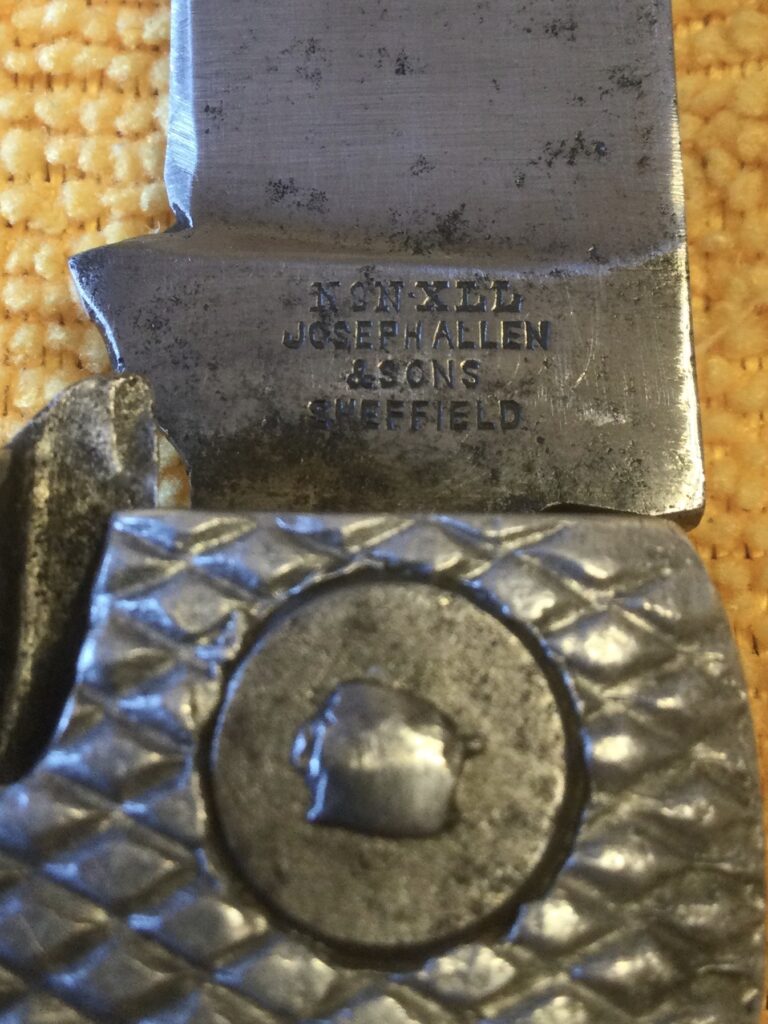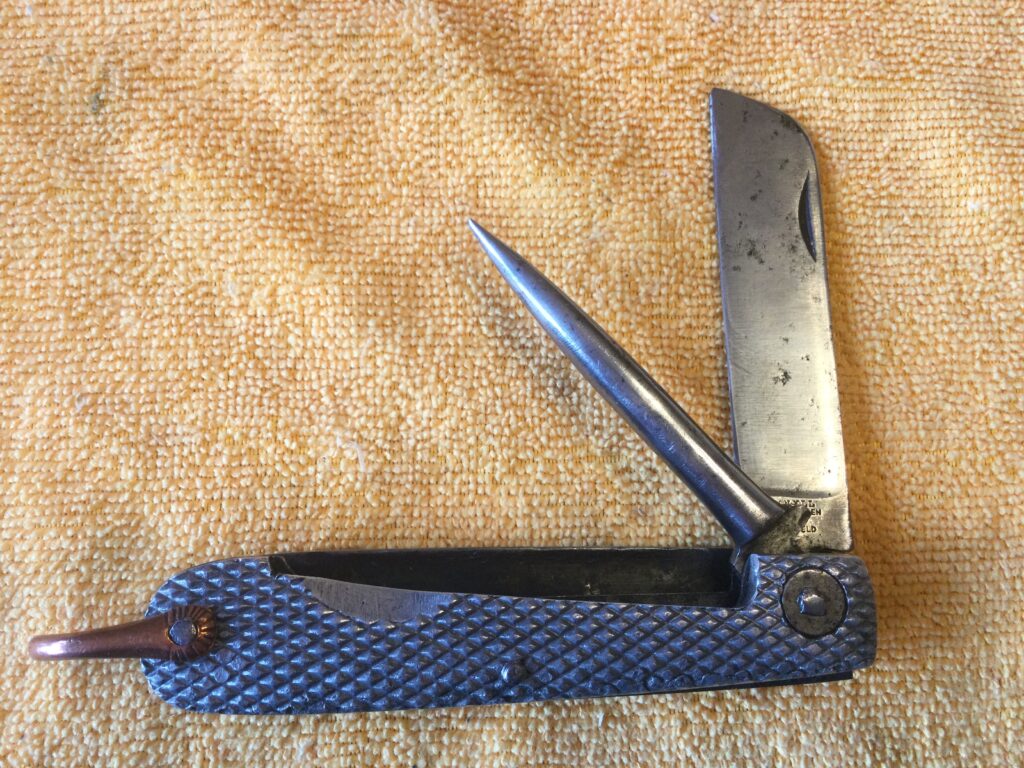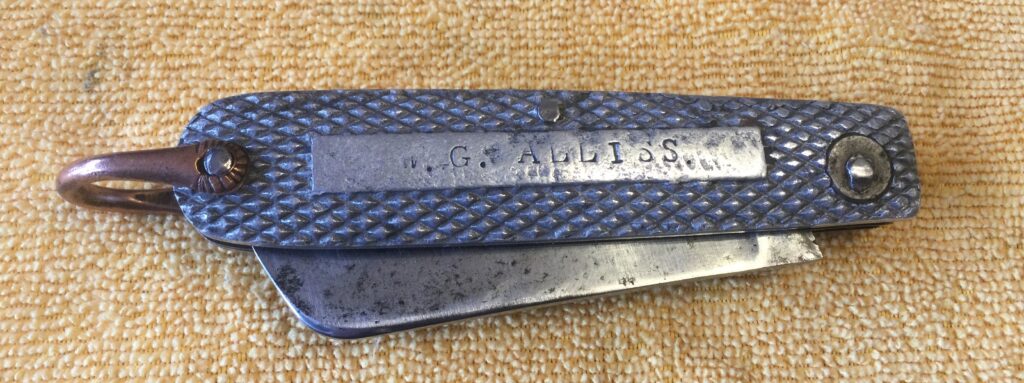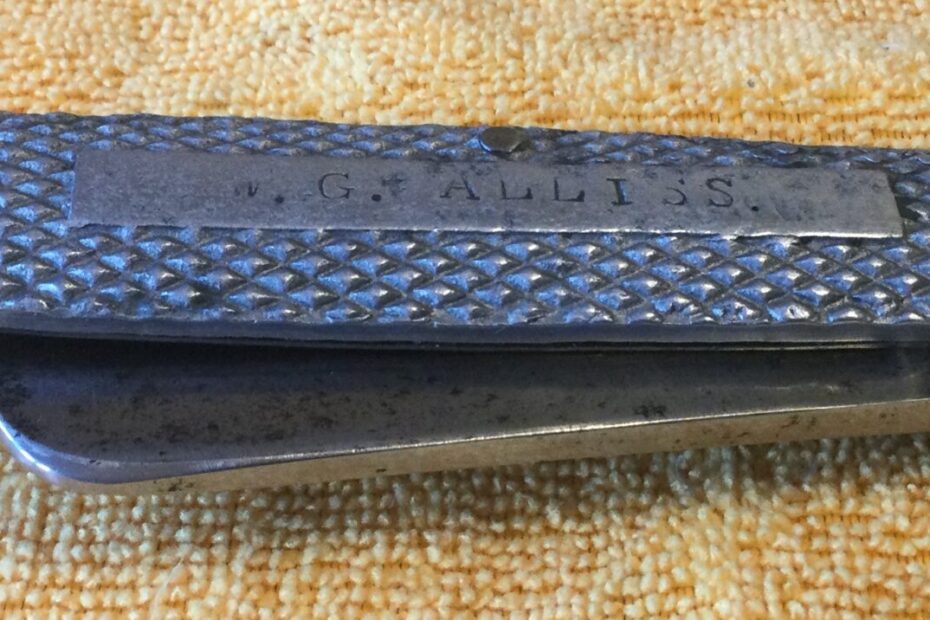I have developed a particular liking for old, Sheffield horn-handled knives, and high on the list is the early version of the British Admiralty Pattern 301 (AP301) of 1910. The horn scales vary from worn smooth to a wonderful 3D pattern of ‘grooves and hills’.

From 1932 until the end of production in 1938, the AP301 was manufactured with grips of checkered aluminium (‘Type II’) which, under normal circumstances I wouldn’t like but, in this case, I’ll make an exception. As a bonus, in common with these and later Naval knives, the grip is stamped with the owner’s name.

The 301, both the early and the later types, are distinguished from WW2 Royal Navy knives by having the blade and the marline spike hinged at the same end. The WW2 knives have the blade and marline spike hinged from opposite ends.

The Type II AP301 is a solid knife weighing in at 8⅜oz/236g, with a 3⅜”/8.6 cm blade and is 4¾”/12cm closed. In my case the maker is JOSEPH ALLEN & SONS, SHEFFIELD with the trademark NON.XLL.

A common feature of the aluminium-handled Type II AP301 (and the later) WW2 naval knife is a blank, uncheckered area for the owner to add his name, in this case W. G. ALLISS.

UK records only show one W. G. Allis, a commercial clerk, born June 1918 and living with his parents in West Ham (London) in 1939. A Facebook contact then kindly informed me that “W.G was issued his long service medal in 1946, when he was 28. The medal is issued at a minimum of 12 years. He must have joined RNVR when he was 16. Probably training at HMS President on the Thames and later HMS Chrysanthemum. He could have been issued with the knife any time from 1934 when he joined. Surprised to see that even today 16 year old kids can join the Navy, and that according to Imperial War Museum RNVR was equivalent to the Territorial Army, where civilians commit to fit training between their normal jobs. No doubt WG is William George as the address on the medal sheet is his parents address in West Ham in 1939.”

Source:
Item: private purchase
Information: personal contact with other collectors
